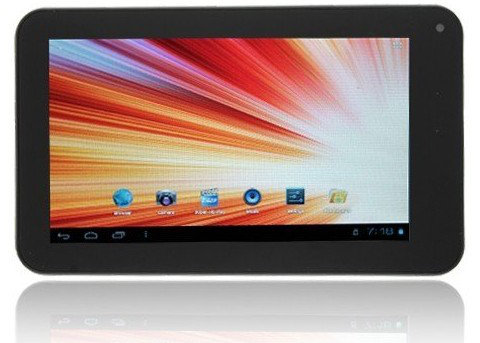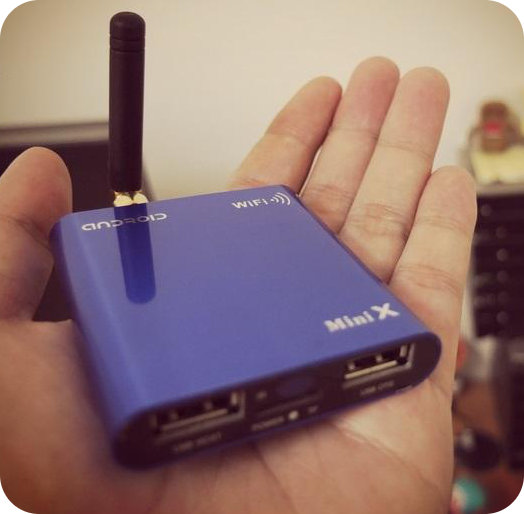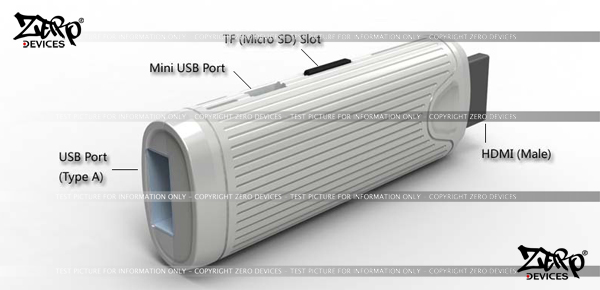In my previous post, I wrote about Marvell announcement of its new 802.11ac chipset (Avastar 88W8897) that will be Wi-Fi CERTIFIED Miracast. But it’s not the only company for such solution, as Texas Instruments has also announced the availability of a complete solution for mobile devices designed to support Wi-Fi CERTIFIED Miracast, based on the Wi-Fi Alliance Wi-Fi Display Specification that enables users to reliably display high definition content from a mobile device onto a larger screen over a secure, low-latency, wireless network connection. The Miracast certification program defines a standards-based solution for streaming video and audio content over a peer-to-peer Wi-Fi Direct wireless network. TI solutions will leverage OMAP processors and its WiLink connectivity solutions to provide a Miracast platform. This new solution will be available later this year to power mobile phones, tablets, HDTVs, projectors and audio receivers. Texas Instruments solution will provide the hardware and software resources […]
Texas Instruments Showcases OMAP 5 GPU Capabilities with GLBenchmark 2.5
In February, Texas Instruments compared the browser rendering performance of its OMAP 5 platform to the Nvidia Tegra 3, and the benchmark results showed OMAP 5 was twice as fast @ 800 MHz than the Tegra 3 @ 1.3 GHz. Today, they’ve uploaded a video showing the 3D performance a tablet based on OMAP 5 (and PowerVR SGX 544-MP GPU) against a market-leading tablet (I guess it’s the Apple iPad 3 with PowerVR SGX 543 GPU) using GLBenchmark 2.5 with the following setup: 1080p resolution. On-screen and off-screen tests were conducted to compensate for the “Vysnc Limited” scenarios. (24bpp) 16bit depth tests to better represent high-end game content Power saving mode disabled and device connected to a power source. No background tasks and airplane mode “on.” The on-screen results show 38 fps for the OMAP 5 vs 34 fps for the other platform, or a 12% performance boost. Off-screen results […]
Linaro Android Puts Stock Android To Shame on TI Pandaboard (OMAP4430)
The team at Linaro has done an amazing job at optimizing Android 4.0 for ARM and Bernhard Rosenkränzer, Android Engineer at Linaro among other things, has put all those optimizations together to showcase a demo at Linaro Connect Q2.2012 in Hong Kong with 2 pandaboards: One running Stock Android 4.0.4, the one released by Google (AOSP) One running Linaro Android 4.0.4 Both hardware, android version and benchmark software (oxBench) are the same, and the results are quite amazing with Android Linaro achieving about 60 fps in all 0xBenchmark tests (OpenGL Cube, OpenGL Blending, OpenGL Fog and Flying Teapot) whereas Android stock achieving 30 fps. They selected a benchmark tool that is mainly CPU bound, as they cannot optimize the GPU code since they can only access binary blobs. Apparently, most of the improvements were possible thanks to toolchain and code optimization (to be able to build) such as using gcc […]
UGoos UG-LMW70 – 72 USD Android 4.0 7″ Touchscreen Tablet Powered By VIA WM8850 (Cortex A9) Processor
Back in January, VIA announced the WonderMedia Prizm WM8950 processor featuring a Cortex A9 processor @ 800 Mhz with a Mali-400 GPU, but recently I have seen a few tablets with the WM8850, the little (or rather the big) brother of WM8950, with the same Cortex A9 but cadenced at 1.2 GHz and Mali-400 GPU. VIA has apparently not officially announced this new processor, and details are not available on Wondermedia website yet, but the WM8850 targets the same markets as AllWinner A10/A13 Cortex A8 processors and is said to be competitive in price. And it must be competitive, because I just found an Android ICS tablet based on WM8850 for $72 US (including shipping) on aliexpress (UGoos UG-LMW70) with the following specifications: CPU – Via Wondermedia WM8850 Cortex A9 @ 1.2GHz + Mali-400 GPU Memory – 512MB RAM Storage – 4GB NAND FLASH + microSD card slot (Up to […]
Linaro 12.05 Release with Kernel 3.4 and Android 4.0.4
Linaro has just released version 12.05 based on Linux Kernel 3.4 and Android 4.0.4. This release provides lots of improvement for Origen (Samsung Exynos 4) on Android, further work has been done on big.LITTLE processing and ARMv8 work appears to have started for Ubuntu and Debian. armel vs armhf benchmarks show a massive improvement (up to 15x) when using armhf for povray (3D rendering),. but for most other tests, there is little improvement, and in some rare cases armhf is slightly slower than armel. Here are the highlights of the release: Android Created a stable Google hangout build for Origen Updated DS-5 and gator daemon to 5.10 Stress tests from big.LITTLE testing have been integrated into LAVA Completed big.LITTLE Android tasks Monkeyrunner tests for automating common Android usage have been integrated into LAVA Ordered a new power measurement device from National Instruments Updated and Origen 3.4 rc7 Completed Android HAL […]
Samsung Releases Galaxy S3 Source Code
Samsung Galaxy S III has just hit the shelves in several countries and Samsung has decided it was a good time to release the source code for the device (codenamed GT-I9300). Two files are available: the original release (GT-I9300_ICS_Opensource.zip – 189 MB) and a new update (GT-I9300_ICS_Opensource_Update1.zip – 190 MB) which can both be downloaded here after accepting some legalese. Alternatively, you can also clone the kernel code from github @ https://github.com/sgs3/GT-I9300_Kernel which is just an import of the file(s) above. Jean-Luc Aufranc (CNXSoft)Jean-Luc started CNX Software in 2010 as a part-time endeavor, before quitting his job as a software engineering manager, and starting to write daily news, and reviews full time later in 2011. www.cnx-software.com
MINI X Android 2.3 Network Media Player Based on AllWinner A10
Here’s another tiny device based on AllWinner A10 processor. The MINI X is an Android 2.3.4 set-top box with 512MB RAM and 4GB NAND Flash that costs 77.50 USD including worldwide shipping. Here are the device specifications: CPU – AllWinner A10 (Cortex A8) with Mali-400 GPU Memory – 512MB DDR3 RAM Storage – 4GB NAND Flash, microSD slot Video Output – HDMI 1.3 USB – 2x USB 2.0 host Connectivity – WiFi 802.11 b/g/n Video Formats – MKV, TS, TP, M2TS, RM/RMVB, BD-ISO, AVI, MPG, VOB, DAT, ASF, TRP, FLV etc Video Codecs – MPEG1/2/4, H.264, VC-1, Divx, Xvid, RM8/9/10, VP6 Subtitle – SRT, SUB, IDX, SSA, SMI Audio Formats – MP3, ACC, OGG, WMA, WAV, M4A, APE Image format – JPG, BMP,GIF, TIF, PNG IR Remote Control Dimension: 72 x 61 x 13mm Weight: 51g This device is half-way between the MK802 HDMI stick and the Mele A1000 STB. […]
Zero Devices Z900 Android 4.0 HDMI Stick
A reader (Thanks Javier!) tipped me about the Zero Devices Z900, an upcoming Android 4.0 mini PC, by one of the companies providing the MK802 / Z802 mini PC. Here are the unofficial specifications: ARM Processor @ 1Ghz with Mali-400 GPU (AllWinner A10 ?, Wrong guess. It’s Telechips TCC8925) 512 MB RAM 4 GB Flash and microSD slot HDMI video output Wi-Fi 802.11 b/g/n 1x USB 2.0 port and 1x mini USB port (power) OS – Android 4.0 Dimensions – 89 x 32 x 18 mm Weight – 38 grams This little device also support 3D video playback. Availability and pricing are not available yet, but we can expect it to be in the same price range of his little brother (MK802 / Z802) that is around 70 to 80 USD including shipping. Since it has an HDMI male connector, it can be more convenient than the MK802 as you […]







